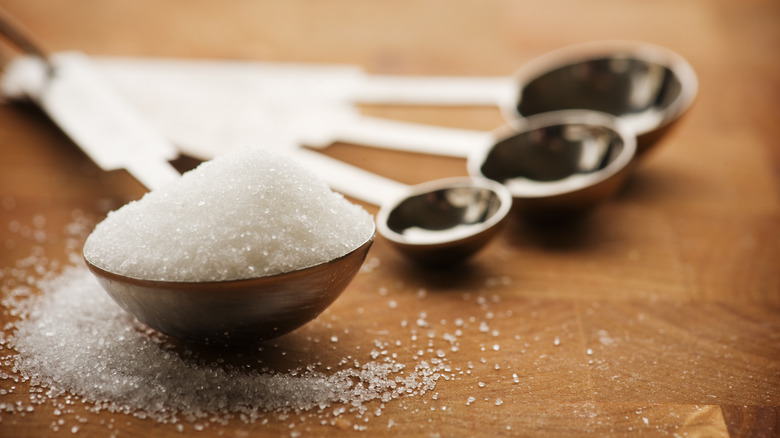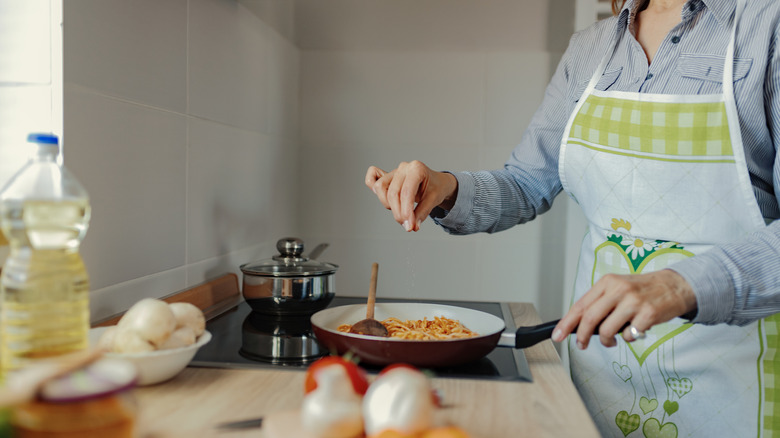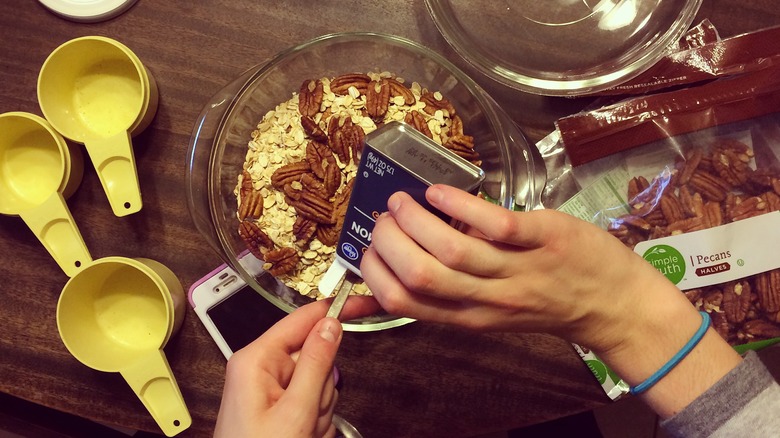What Does A 'Dash' Or A 'Pinch' Really Mean?
We may receive a commission on purchases made from links.
Recipe writing as we know it today is a relatively recent art that took thousands of years to take shape. When encountering older recipes, perhaps ones passed down from an older family member, you've probably come across measurements described as "a dash" or "a pinch" of something. While Nana might find these measurements self-explanatory, they can be infuriating to a contemporary cook, particularly in ratio-dependent culinary fields like baking.
Luckily, there are cooks who have been gracious enough to translate these terms into quantifiable measurements. A "pinch" in a recipe literally refers to the amount of something that could be pinched between your thumb and forefinger, which many chefs have converted to 1/16 of a teaspoon. A "dash," on the other hand, refers to the amount of liquid that would be released if you started to pour a liquid and immediately stopped, and is usually converted to ⅛ of a teaspoon.
What is a pinch or dash?
But even if you want to measure a pinch or dash of an ingredient, you may run into trouble, since most standard measuring sets don't include a ⅛ teaspoon or 1/16 teaspoon. So you may have to go old school on this one, "pinching" for salt or spices, or "dashing" for liquid measurements as you see fit.
Dashing is more often used today in the cocktail word, as a measurement for bitters, which is why bitters bottles are better designed to release the desired "dashed" amount without measuring. (An Old Fashioned, for example, might call for three dashes of bitters, which can be released from the bottle using three quick flicks of the wrist.)
If you do want to measure a dash, you could fill a standard ¼ teaspoon halfway. You could also seek out measuring sets that include ⅛ or 1/16 teaspoon measurements, or an adjustable measuring teaspoon with these sizes, but these are generally specialty products.
Other common colloquial cooking terms include a "splash," or about ⅛ of an ounce (mostly used for liquids); a "tad," or ¼ teaspoon; or a "smidgen," about 1/32 teaspoon.
How did these terms come about?
Historically, recipes were rarely written down, and if they were, they didn't contain a wealth of information. Most recipes were written as notes from one chef to another, and assumed a certain level of technical knowledge and understanding of local cooking methods, so they would be all but illegible to a novice cook trying to recreate these recipes today.
While we might take it for granted that a recipe calls for a tablespoon of this, or a half cup of that, these methods of measurement weren't standardized until 1896, when Fannie Farmer published "The Original Boston Cooking-School Cook Book." Designed as a guide to teach young women to cook, the step-by-step instructions and specific measurements provided were an anomaly at the time. Even then, measurements could vary depending on the cups, soup spoons, or teaspoons in each household that would be used to measure ingredients.



